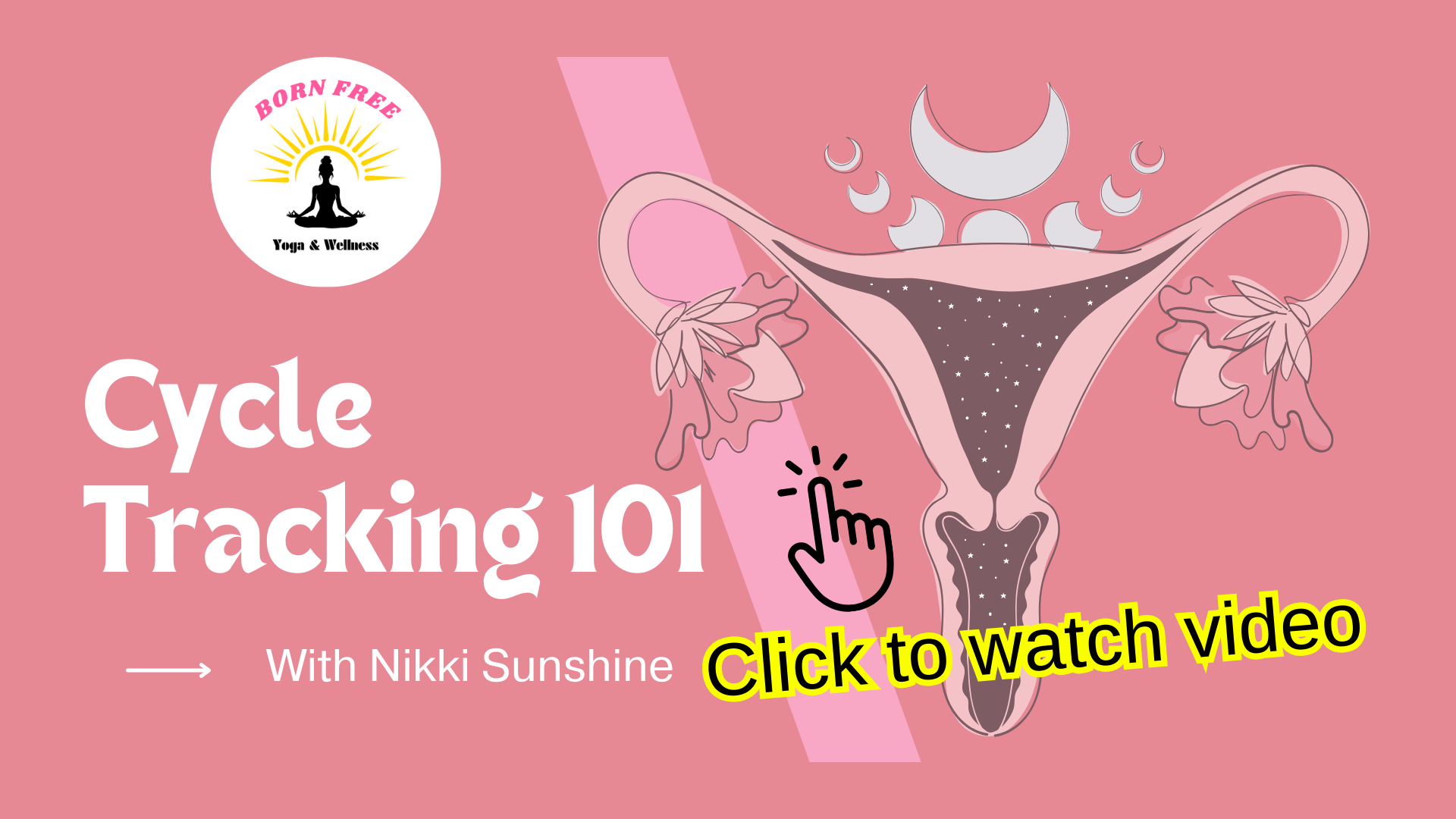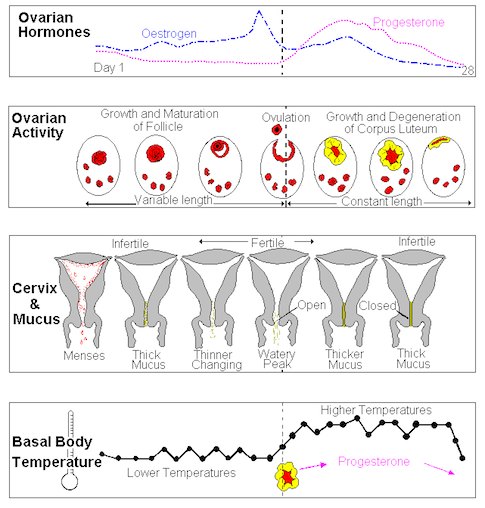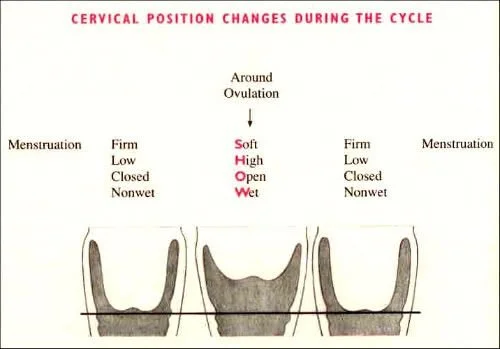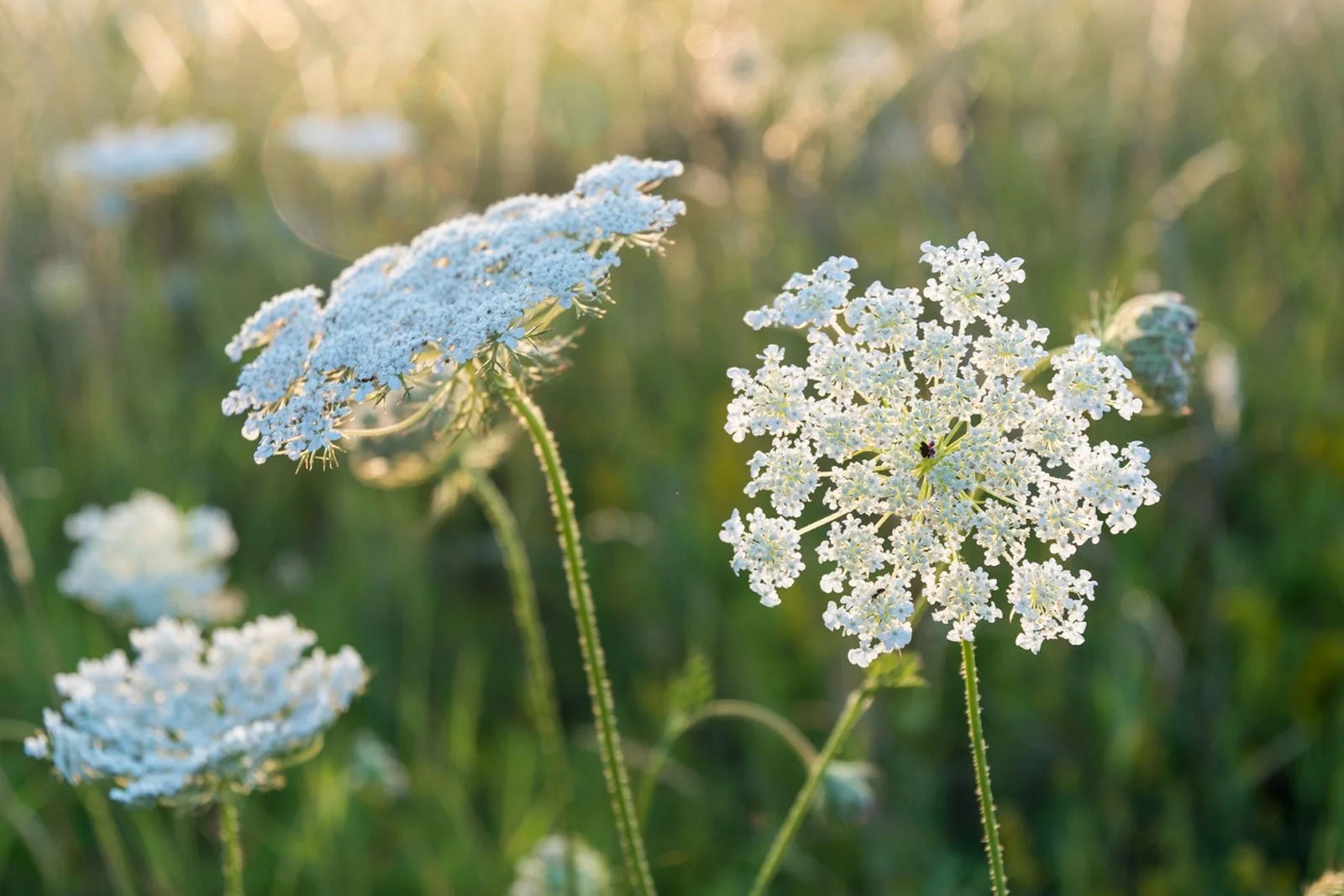Natural Birth Control Methods: Cycle Tracking & Queen Anne’s Lace
More than likely, if you ask a medical doctor about birth control options you will be disappointed if you were looking for something natural or lacking nasty side effects. Some of the birth control options that doctors prescribe cause uncontrollable weight gain, mood swings, and can cause serious damage to your hormonal cascade. Medical doctors aren’t educated about natural birth control methods in medical school. Doctors are sometimes prohibited from recommending natural birth control methods by hospital or clinic policy. The pill, IUDs, synthetic hormone injections, and implants are what they have to offer. Most of these forms of birth control are problematic for many reasons. With side effects ranging from headaches to cervical cancer, I wouldn’t take my chances. There has to be a better way.
Many women are unaware that there is a reliable method of birth control that doesn’t involve drugs, synthetic hormones, hormone blockers, or foreign objects inserted into the body. Fertility Awareness Method, Natural Family Planning, and Cycle Tracking are some common methods of natural birth control that can be as reliable as medical contraception. There are some differences between these methods, but they involve the same or similar procedures.
Did you know there are only on average 6 days a month that women can get pregnant? Women ovulate once per month or cycle. There is a short window around this time when a woman can become pregnant. It is also important to note that ejaculate can live inside a woman for up to 72 hours. This means you should avoid sex resulting in ejaculate entering the vagina 3 days before ovulation.
Cycle tracking can take a while to get comfortable with, but once you get the hang of it you will always know exactly when you are ovulating! This can be a reliable tool to use for birth control and getting pregnant!
You might be wondering, “How the heck will I know when I’m ovulating?”
Good question. There are many signs and signals that your body gives during the different phases of your cycle. Your cervical fluid, the position of your cervix, and your basal body temperature are the main signs that women use to know when they’re ovulating. Once you start tracking your cycle for a while you will develop a deeper understanding of your anatomy and physiology. After a while, you will notice subtle changes in your body and mood as you ebb and flow through your cycle.
I know when I am ovulating without checking my cervix and temperature every day. It took years for me to feel this confident and in the meantime checking cervical fluid and position helped me stay baby-free until I was ready. Once I was ready, it took me one try to get pregnant. For more information on preparing for pregnancy and fertility support sign up for our newsletter to get our free 25-page Pregnancy Prep Guide!
It is important to note that if you have been on medical birth control it might take a while for your body to adjust back to a healthy hormonal cascade. If this case, I highly recommend checking out the Pregnancy Prep Guide mentioned above because there is tons of valuable information about balancing hormones through diet and lifestyle.
To recap, the easiest way to know when you are ovulating or in your fertility window is by checking your cervical fluid, the position of the cervix, and basal body temperature. I recommend using a few of these methods together for the best results, especially as you find your rhythm with your body.
Basal Body Tempurature
So, what’s the difference between regular body temperature and basal body temperature? Both can be taken with a thermometer under the tongue, but a basal body temperature thermometer reads to the hundredth of a degree rather than the tenth of a degree like a regular thermometer would. Basal body temperature is your temperature when you're fully at rest. Ovulation causes a slight increase in basal body temperature. This slight and gradual rise in temperature is what you are looking for to see if you are ovulating.
It is important to try to take your temperature at the same time every day for most accurate results. The best time to take your temperature is right when you wake up, before you eat or drink anything. It is important to note that certain things like - cosleeping, breastfeeding, working nightshift, and poor sleep can effect the results. Tracking Basal Body Temperature doesn’t work well for everyone because of this reason. Just do your best to be consistent if you want to use this method.
Some women take their temperature every day and write it on a chart, or calendar, or enter it into a cycle tracking app. The chart is a great way for women who are just starting to be able to get a visual representation of the dip and rise in their temperature. Some apps create a chart for you and also have the option to add details about cervical fluid, cervical position, mood, and other possible symptoms that you might want to track. I used the Femometer app in the past but I’m sure most cycle-tracking apps are pretty comparable. You'll be most fertile during the two to three days before your temperature rises. By tracking your basal body temperature each day, you should be able to predict when you'll ovulate.
Cervical Fluid
The consistency of cervical fluid, sometimes called cervical mucus, is a great indication of what phase of your cycle you are in. Hormones cause your cervical mucus to change in texture, volume, and color throughout your menstrual cycle. Cervical fluid plays an important role in helping you become pregnant. Cervical fluid helps sperm move through the cervix so it can fertilize an egg during ovulation. When you are not ovulating cervical mucus prevents sperm or other substances from getting into the cervix.
Cervical fluid is thick, white, and dry before ovulation (when your ovary releases an egg). The hormone estrogen peaks just before ovulation. This causes cervical mucus to change from pasty or creamy to resembling stretchy, raw egg whites. This wet, slippery discharge makes it easier for sperm to swim up the vagina and into the uterus to meet an egg.
Checking cervical fluid is my favorite way of telling if I am ovulating or in my fertility window. Once you get used to checking your cervical fluid you will be very confident in what phase of your cycle you are in.
Okay, now you might be asking, “HOW do I check my cervical fluid?”
There are a few different ways to check your cervical fluid. You can insert a clean finger inside of your vagina to collect some fluid or mucus to see what the consistency is. Often when you are ovulating the fluid is so slippery that when you wipe after using the bathroom you can clearly feel the difference. Everyone is different so you will have to see what works best for you.
Cervical Position
The cervix changes positions depending on what phase of your cycle you are in. The cervical position during ovulation is high, and the cervix becomes soft, more wet, and open. The acronym SHOW (soft, high, open, and wet) can help you remember this. The cervical position after ovulation becomes low, and the cervix becomes firm, drier, and closed. When the cervix is in a low position, you may feel your cervix with your finger inserted in the vagina up to the first knuckle. When the cervix is in a high position, you may feel your cervix with your finger inserted in the vagina past your second knuckle, or you may not be able to feel it at all.
This one takes practice to tell the difference between different positions. It can be helpful to check your cervix regularly, I like to check when I shower. After you check the position make a mental note or write it down in an app or notebook. Comparing your cervical position with your basal body temperature, or cervical fluid consistency can help you gain a deeper understanding of your cycle and what your body is doing while you are ovulating.
Avoid checking the position of your cervix after or during sex. Your cervix changes position according to the level of your sexual arousal, regardless of the menstrual cycle phase.
Cycle tracking can be a very reliable method of pregnancy prevention. After some time of paying attention to your body and these signs, you will likely become very confident in knowing what phase of your cycle you are in. If you are around your fertile window you will want to either abstain from sex with internal ejaculation or you will want to use a backup method of pregnancy prevention (condom or Queen Anne’s Lace). Queen Anne’s lace can be a helpful tool if you have a potentially fertilizing event and you do not wish to become pregnant.
Queen Anne’s Lace for Fertility Management
I have been using this medicine in conjunction with cycle tracking to manage my fertility for years. Queen Anne’s Lace is a wildflower also commonly called Wild Carrot. QAL can be used after a potentially fertilizing event(sex with ejaculation inside of the vagina) to prevent implantation. QAL works inside the body to make the uterine lining “slippery” so in the event that an egg has been fertilized it will not be able to implant into the uterine lining. I recommend having a solid understanding of cycle tracking before adding an herbal component to your fertility management practice. If you are new to cycle tracking, you can use QAL after every time you have sex. If you are very confident in tracking your cycle you can choose to only use QAL around when you are ovulating. Queen Anne’s Lace is not meant to be used daily. Everyday use of QAL can diminish its efficacy as an implantation inhibitor.
Below I have a recorded mini workshop that outlines the basics of working with QAL for fertility management. Below the video, I have helpful notes and graphics.
Flowers: White, tiny individual flowers grow in clumps forming a lacy, flat cluster measuring 1-4 inches across. Web of spindly floret stems join on the underside of the flower in a single point. Some have a single red/pink/purple flower in the exact middle of the cluster.
Leaves: 2-8 inches, flat, offshoots from center, thin and spindly except at base where rather thick and often hairy on the underside. Usually smooth.
Seeds: green when new, brown or even grayish when dried, oval, ridged/textured, “hairy” like stem
Height: typically about 2-4 feet
Smell: smells faintly of carrot and fresh greens
It is essential to accurately identify this plant if you wish to work with it. There are a few look-a-like and some are poisonous even in small quantities. Remember the quote “The queen has hairy legs” when identifying Queen Anne’s Lace. QAL stems have hairs or furs on them. No QAL look-a-like has hairs on the stems. Poison hemlock is poisonous even in small quantities so it is very important to be certain when harvesting QAL. Poison hemlock has a smooth stem and purple spots on the stem.
Be careful when harvesting on the side of the road or in the woods. You don’t want to accidentally consume flowers that have been sprayed with pesticides. This can make you very sick. I recommend planting your own wildflower and herb garden on your property. If that isn’t an option for you make sure you are harvesting from an area of no pesticide use or you can purchase dried seeds, flowers, or tinctures online from a trusted source.
There are several different ways to take QAL to prevent implantation, but there is only one way that I trust to work every time. If you are interested in using this herbal medicine for implantation prevention, you must know when you are ovulating and what those signs are for your body. In theory, you could still use this medicine as implantation prevention if you aren’t sure but I would highly recommend getting comfortable with your cycle before relying on QAL as an implantation prevention method.
I recommend using dried seeds of the flower. In my experience, this is the most effective way of using this plant for implantation prevention.
Take about a teaspoon, chewed well, and swallowed with water on an empty stomach.
or
Take about a teaspoon, ground by mortar and pestle or clean coffee grinder, mixed into small amount of juice or water, taken on an empty stomach
This is to be taken daily until your bleed starts if there was a potentially fertilizing event(sex with internal ejaculation around your ovulation window).
Finally! Fertility management options that are truly empowering and don’t come with nasty side effects. The best part about these methods of fertility management is that you will gain a deeper understanding of your cycle, your body, and yourself. When you do feel ready to become pregnant, you will already feel comfortable telling when you are ovulating so you will know when the best time to have sex is! Plus, you won’t have to detox from all of the nasty chemicals and synthetic hormones that come with medical birth control.
This Free Resource is a great starting point but I recommend continuing your research into cycle tracking, Fertility Awareness Method, or Natural Family Planning. I highly recommend the books Taking Charge of Your Fertility by Toni Weschler and The Fifth Vital Sign by Lisa Hendrickson-Jack to gain a deeper understanding of the concepts discussed in this post.
I also highly recommend Molly Dutton-Kenny’s course on using Queen Anne’s Lace(Wild Carrot) as fertility management to prevent implantation if sex occurs around ovulation and you do not wish to become pregnant. She goes into much deeper detail than I do here. Her course is $30 and it is well worth the cost.
As always, you are more than welcome to schedule a session with me to dive deeper into this subject and ask any lingering questions.













